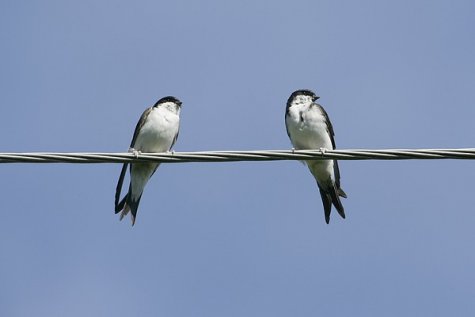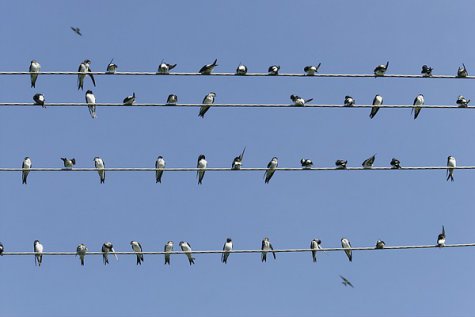Swallows on power lines
Photos Arne Ader
Sound record Veljo Runnel, www.loodusheli.ee
Translation Liis
House martins
House martin Räästapääsuke Delichon urbicum
Everybody knows our national bird, but it appears that the barn swallow and house martin are not particularly well distinguished from each other.
House martins like to have their nests near people: in the eaves of stone houses or higher points of other buildings when there is an opportunity. Catching insects in urban areas also takes place flying higher because they will not swoop towards the ground as barn swallows do.
Hous martins are sociable birds, liking to nest in colonies and we will see no quarrels in their internal relations. The adults quite often nest twice during a summer and the young of the first clutch help the parents to feed the chicks of the second clutch. As an estimate, 80 000 to 150 000 pairs of house martins nest in Estonia.
The head and back plumage of house martens is similar to that of barn swallows – glossy blue-black, but wing feathers are dark brown. The white throat patch of house martins is arresting together with the wholly white underparts; the lower part of the back from the wings to the tail is also white.
How do the house martin flocks grow so large? The adults keep together with the young, and by and by all the birds that nested together in a colony gather. After some more time other flocks join them and so the giant flocks are created.
The first flocks of the swallow that have nested here start on their migration from mid- August. They migrate in daytime. From the North passing migrants arrive here during the whole of September. Sometimes we notice house martin adults feeding young even in September: when the earliest migrants already have reached halfway to the wintering areas in Africa, late nesters join passing migrants.
Read about barn swallows: LINK
Listen to house martins: LINK
House martin observations: LINK
House martins










